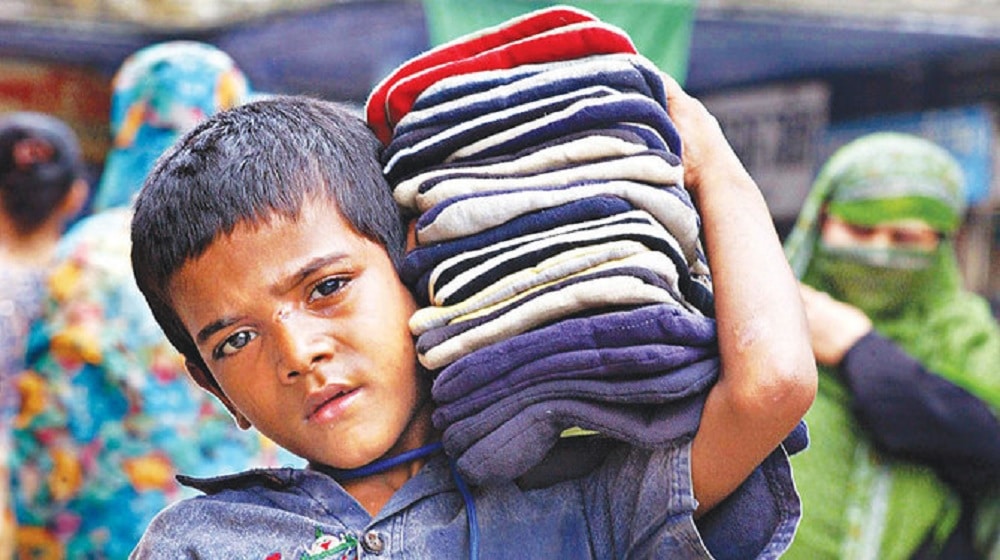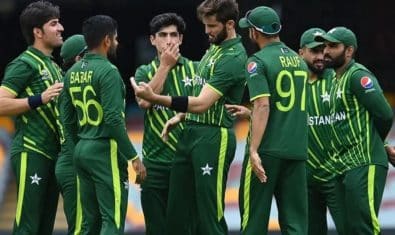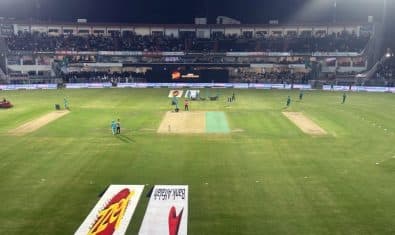This year’s World Day Against Child Labour (WDACL) on 12 June was observed with the theme ‘Universal Social Protection to End Child Labour’. Established in 2002 as a holiday by the International Labor Organization (ILO), it is observed to increase awareness about the harms of child labor and its impact on individuals, especially the sex trade, drug trafficking, and the use of children in war zones. However, as the world progresses toward abolishing child labor, Pakistan’s efforts to follow suit are hindered by an unusual predicament – agreeing on what the actual age of a child is – which is depriving millions of their childhood and rights.
A representative of the ILO explained that the action to bring attention to the exploitation of children for menial work “was spurred on by the ratification of important treaties like the Worst Forms of Child Labour Convention (ILO Convention No 182) in 1999 and Minimum Age Convention (ILO Convention No 138), which was passed in 1973”.
More than 150 million children and adolescents work in harmful areas that threaten their physical and mental health, and largely impact their social lives, education, and health, as per an ILO report. It stated that child labor has crossed 160 million, which is the highest increase in two decades.
The ILO and the United Nations International Children’s Emergency Fund’s (UNICEF) new report ‘Child Labour: Global Estimates 2020, Trends and the Road forward’ detailed that an increase of 8.4 million children was noted in the last four years due to the pandemic. Released ahead of World Day Against Child Labour 2022 on 10 June, the report warned that “progress to end child labor has stalled for the first time in 20 years, reversing the previous downward trend that saw child labor fall by 94 million between 2000 and 2016”.
It also highlighted a significant rise in the number of child laborers between the ages of five and eleven. Moreover, the number of children aged five to seventeen years in dangerous workplaces have escalated by 6.5 million to 79 million since 2016.
Pakistan and Child Labor
As a developing country, Pakistani children are exposed to serious threats, particularly those from impoverished families and in the border regions and poor families as per reports. Around 3.3 million Pakistani children are child laborers who have been deprived of their childhood, health, and education because of poverty, as stated in the UNICEF’s Child Protection report 2016.
The ILO stated that Pakistan ranked third in the world for having the largest children’s workforce although its government had strived to make several laws against child labor.
While the country is awaiting its next child labor survey, the report showed that the four provinces have different laws on child labor and the age of minors, which is delaying the provision of justice and jeopardizing Pakistan’s role as a signatory of the ILO labor rights and child labor standards. As a signatory, Pakistan is also supposed to follow the Juvenile Justice System Act, 2018.
Although there is no specific chapter on children in the Constitution of Pakistan, 1973, almost all the constitutional rights mentioned in the chapter on Constitutional Rights are equally important for children and adults.
Article 11 of the chapter details the prohibition of all forms of slavery, trafficking, forced labor, and child labor in hazardous fields; Article 25 is about equality and highlights that everyone is equally subject to the law; and Article 35 emphasizes measures to ensure the safety of the family and children. Another point of Article 37-G also mentions protection from all forms of exploitation and prostitution.
The Pakistan Penal Code (PPC) also has different rules and provisions for prosecution for the crime of child labor. It specifies that anyone who commits a crime related to child labor and sex is liable to any kind of imprisonment which will not be less than two years and up to a maximum of seven years, in addition to a fine of not less than Rs. 1 million.
There is a general consensus that children are legally not allowed to work in any business in Pakistan but there is no law that prohibits them from working inside homes. Pakistan does, however, have a penalty for such cases, an example of which is the Tayyaba Torture case which resulted in the long-awaited ‘National Commission on the Rights of Children Bill’ by the National Assembly of Pakistan in 2017.
The Chairperson of the National Commission on the Rights of Children (NCRC), Afshan Tehseen Butt, reportedly declared in a statement issued today that the NCRC believes that child labor is a violation of every child’s right to a childhood and their inalienable rights.
The statement also cited the latest Pakistan Labor survey, according to which over 26 million children between the ages of ten and fourteen are working in the country.
How Old is a Child/Minor in Pakistan?
A person below the age of 18 is typically considered a child in Pakistan. However, while the Constitution of Pakistan does not define the word ‘child, there are special clauses that refer to children that also mention age. For example, Article 11 sets the minimum age for child labor at 14 and prohibits children from working in hazardous sectors.
The constitution also specifies that no child below the age of 14 is to be engaged in a factory or a mine or any other hazardous employment, and Article 25-A details that the State will provide free and compulsory education to all children between the ages of five and sixteen.
The PPC 1860 stipulates a minimum age for criminal offenses, stating in Article 82 that “a child who is under the age of 10 years shall not fall into the category of a crime”. Similarly, Section 83 of the PPC also details the act of a child between the ages of 10 and 14 will not be considered a crime as the child is not mature enough to fully comprehend the nature of the act and its consequences.
More definitions of a ‘child’ are mentioned in the Pakistan Citizenship Act 1951 which specifies that a person below the age of 21 is a child. Additionally, the Offence of Zina (Enforcement of Hudood) Ordinance 1979 limits the age of a boy at 18 and a girl at 16, and the Vagrancy Ordinance 1958 specifies 14 as the age of a child.
The Prison Rules 1978 also mentions 18 as the limit as do the Juvenile Justice System Act, 2018 and the Zainab Alert, Response and Recovery Act 2020.
Despite the numerous official ranges and limits, there is no agreed-upon age range for a child in Pakistan, which prompted the ILO to push for Pakistan to reach a consensus on it.
The ILO Country Office for Pakistan conducted a symposium for the WDACL in Islamabad in which the Officer in Charge of the ILO Country Office, Peter Buwembo, stressed the need for mutual consent for the age of a child in all child labor and employment laws by the federal and provincial government.
Efforts to Ban Child Labor in Pakistan
Butt told ProPakistani that the NCRC has asked the State to work on providing children with protective measures besides strengthening its social safety net, and added that the State should enforce a comprehensive ban on child labor.
Regarding the different ages for child labor in the provinces, she said the government should set a standard minimum age for children all over Pakistan and must develop a comprehensive plan to enforce it in all the provinces, Gilgit-Baltistan, and Azad Jammu and Kashmir.
Butt also urged for working children to be sent to school or given vocational training if they are older than 15.
In conclusion, while Pakistan has a number of Acts that deal with children and their ages, lawmakers are yet to decide the exact definition of a child and its age. The provinces would do well to define the age of a child in accordance with international laws as this will help them implement child labor laws and increase safety nets for children in Pakistan.

























